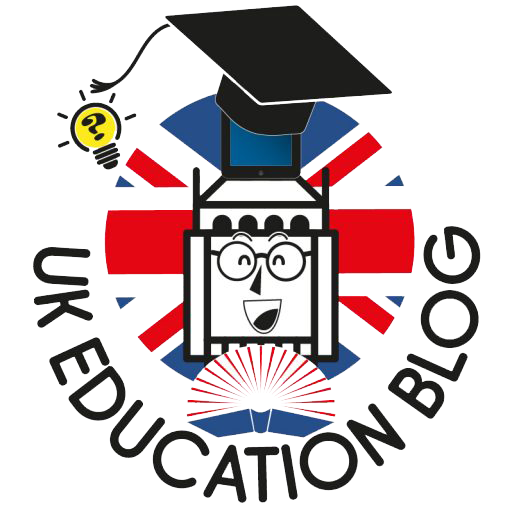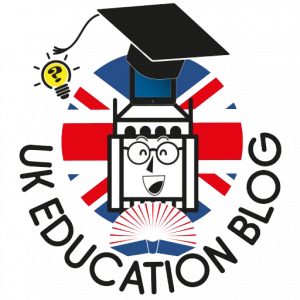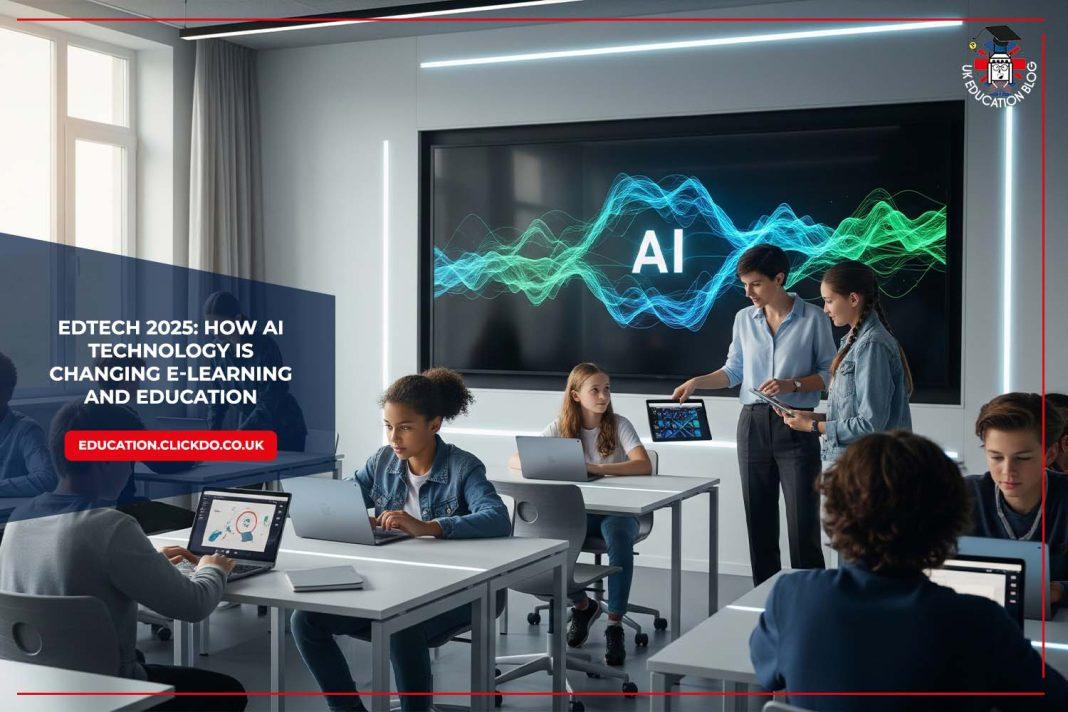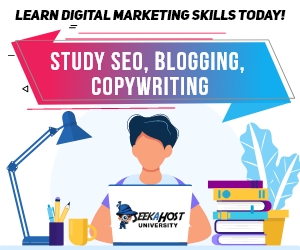In 2025, education is shaped by tools that feel as intuitive as the apps we use after hours.
What this means right now: Personalisation is no longer a luxury add-on; it’s a baseline expectation.
AI and Personalisation at Scale

Artificial intelligence has moved from proof-of-concept chatbots to dependable utilities. Design cues from entertainment, shopping, and even bingo sites UK – where clear onboarding, instant feedback, and mobile-first flows are non-negotiable – are now table stakes in online platforms.
The result is an online experience that is more adaptive, data-literate, and humane, provided providers pair new software with sound and thoughtful policy.
Rather than replacing teachers, the most successful deployments act as a co-pilot: drafting lesson outlines, generating practice sets, explaining steps, and flagging misconceptions.
The core idea is simple – meet each learner at their current level and move them forward without adding hours to a teacher’s day.
- Adaptive learning engines: Courseware now adjusts difficulty in real time, switching problem types, pacing, and scaffolds based on student performance rather than a fixed syllabus.
- Teacher co-writers and graders: AI helps draft instructions, rubrics, exit tickets, and feedback comments that teachers refine, shortening the path from planning to practice.
- Formative assessment at the point of need: Quick, low-stakes checks – exit slips, polls, short reflections – are analysed instantly so teachers can regroup the class or target small-group support.
- Language and accessibility supports: Live captioning, on-the-fly translation, text simplification, and read-aloud features reduce barriers for multilingual learners and those with print disabilities.
- AI safety rails: Districts deploy filtered models, private data boundaries, and audit trails so student work isn’t exposed and recommendations stay age-appropriate.
The best results appear where schools couple AI with explicit skill-building – metacognition, media literacy, and reflection – so students learn with the tool rather than outsourcing thinking to it.
The New Classroom Stack: Devices, Platforms, and Data
Under the hood, the classroom now runs on an integrated stack: devices that are easy to manage, a learning platform that ties content and assignments together, and data standards that keep tools talking to each other.
This interoperability reduces busywork and makes it possible to track progress across subjects and grades.
- Device mix with strong management: Districts standardise on affordable laptops or tablets with centralised updates, app whitelists, and remote support to keep lessons running smoothly.
- Interoperable platforms: Learning systems plug into student-information databases through modern standards so rosters sync automatically and classroom apps log activity without manual exports.
- Privacy-first analytics: Dashboards surface trends – attendance patterns, assignment completion, reading stamina – while applying data-minimisation and role-based access controls.
- Offline and low-bandwidth modes: Downloadable lessons, lightweight file formats, and “sync when online” design help schools where connectivity is inconsistent.
- Parent and caregiver portals: Mobile apps offer clear views of work, deadlines, and teacher messages, improving home-school coordination without extra email chains.
What this means right now: When the stack is coherent, teachers save hours per week and families stay informed. The payoff isn’t flashy tech for its own sake; it’s fewer logins, fewer clerical chores, and more time on tasks that actually change outcomes.
Teacher workload is finally being addressed

For years, technology promised time savings but delivered dashboard fatigue. In 2025, the improvement is tangible: lesson-plan templates that align to standards in minutes; auto-grouping for small-group instruction based on current skill gaps; and feedback helpers that cite the rubric criterion they address.
The craft of teaching remains central – deciding which hint to surface, when to pause, how to extend – but the clerical load shrinks. That shift keeps early-career teachers in the profession longer and gives veteran educators space to focus on relationships and enrichment.
Assessment is widening beyond test prep
With AI tools able to draft essays and code snippets, educators are refreshing task design. More prompts now require oral defence, process artefacts, or applied projects – design a survey, run an experiment, critique a data visualisation – where reasoning is visible.
Plagiarism detectors alone are not a strategy; better prompts, reflection journals, and version history make authorship clearer without a punitive tone. Proctoring tech is still used, but the trend is toward authentic performance rather than escalating surveillance.
Skills signalling is maturing
Micro-credentials, badges, and skill transcripts have moved from pilot to practice in many districts and colleges. Instead of a single letter grade standing in for a semester of work, learners compile artefacts and verified skill statements: “models exponential growth with real-world data,” “builds accessible web interfaces,” “works in cross-functional teams.”
Employers – especially those hiring for entry-level tech and operations roles – value this clarity. The key is credibility: credentials tied to transparent criteria and human review carry weight; vanity badges do not.
Equity is a design requirement, not an afterthought
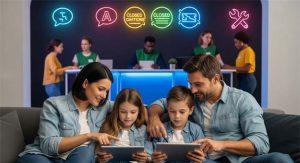
One-to-one devices mean little if students can’t charge them, repair them, or connect at home. Districts that are thriving in 2025 treat support like infrastructure: family tech nights, multilingual help lines, community Wi-Fi, device repair clinics, and content designed to work on low-cost phones.
Apps that respect screen-reader semantics, dyslexia-friendly typography, and colour-contrast standards expand who can participate fully without separate workflows that stigmatise. When done well, “universal design” helps everyone.
XR is finding its lane
Virtual and augmented reality no longer pitch themselves as a total classroom replacement. Instead, they shine in moments where seeing a complex process up close matters: inspecting a cell in 3D, “standing” inside an ancient temple, or practising safety procedures in a simulated lab.
Costs have fallen, content libraries have grown, and shorter, focused experiences fit better with classroom rhythms. The test for any XR lesson remains simple: does it add insight that a video or interactive diagram cannot? When the answer is yes, students retain more and speak about the concept with greater precision.
Career pathways are getting clearer
Dual-enrollment programs and career-technical education (CTE) tracks now align with regional workforce needs, supported by platforms that handle enrollment, scheduling, and credit portability.
Students can complete an industry-recognised certificate alongside high school graduation, reducing friction at the moment they enter work or a two-year college. The most thoughtful programs pair technical skill with soft-skill practice – team communication, project scoping, client feedback – mirroring how real workplaces operate.
Data ethics sits front and centre

Schools collect less, keep it for shorter periods, and make it easier to see who has access. “Right to inspect” dashboards let families review the data held on their student, request corrections, or opt out of non-essential analytics.
AI features come with plain-language model cards: what the tool does, what it does not do, and how it was tested for bias. These measures build trust, which is a prerequisite for any technology initiative that touches children’s work.
Professional learning is continuous and job-embedded
Rather than one-off workshops, teacher development looks like coaching cycles: try a strategy, gather evidence, reflect, iterate. Micro-courses for new tools are short, on demand, and tied to what a teacher is teaching next week.
Communities of practice – within a school and across districts – share lesson packs, prompt banks, and case studies so no one is reinventing the wheel alone. The cultural shift is from “training on a product” to “refining a practice,” with technology as a means, not the end.
Procurement is smarter
Districts test before they buy, using tight pilots with clear success criteria: engagement metrics, assignment completion, growth on specific skills, and teacher time saved. Interoperability and accessibility are set as must-haves, not nice-to-haves.
Contracts include data-handling clauses, off-ramps if the product underperforms, and support commitments beyond launch week. Vendors that play nicely with the rest of the stack and show credible evidence of learning impact win repeat business.
What to watch through the rest of 2025
- The rise of district-hosted “private AI” services that route prompts through models controlled by the school, not a public endpoint. This supports stronger privacy and more predictable costs.
- Growth of project banks and open resources that pair high-quality content with AI-ready scaffolds – think prompts, exemplars, and common misconceptions – so teachers don’t start from scratch.
- Tighter articulation between K-12, community colleges, and workforce boards, especially in fast-moving fields like data analytics, healthcare tech, and green energy operations.
Technology doesn’t teach by itself; people do. In 2025, the schools making the biggest strides treat tools as partners that reduce friction and widen access. They set guardrails, invest in teacher skill, respect privacy, and keep the focus on rich tasks that matter. When those pieces line up, students not only learn the content – they practice the habits of inquiry, collaboration, and reflection that carry far beyond a course or an exam.
Author Profile

- Shirley Owen is a blogger and writer who enjoys writing blogs on education, technology and general news. An avid reader, she follows all the latest news & developments to report on them through her articles.
Latest entries
 careerDecember 30, 2025Why BIM Mastery has become essential for Construction Professionals in 2025
careerDecember 30, 2025Why BIM Mastery has become essential for Construction Professionals in 2025 learningDecember 22, 2025When Co-parenting Affects School Performance – Challenges & Solutions
learningDecember 22, 2025When Co-parenting Affects School Performance – Challenges & Solutions educationDecember 11, 2025Making Education Accessible for Mobile Families that Travel
educationDecember 11, 2025Making Education Accessible for Mobile Families that Travel learningOctober 28, 20257 Daily Classroom Strategies Helping Children With Learning Differences Thrive
learningOctober 28, 20257 Daily Classroom Strategies Helping Children With Learning Differences Thrive
